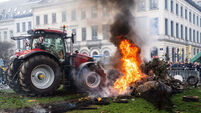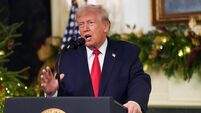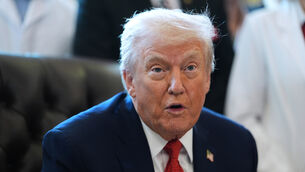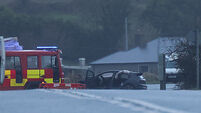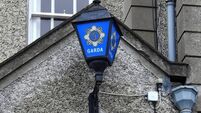Australians smash Iraq's command centres
Australian special forces have taken out two of Saddam Hussein’s command and control centres and killed some of his most elite soldiers, they said today.
The 500-strong Australian Special Forces Task Group includes commandos, specialist troops trained to deal with weapons of mass destruction, Chinook CH-47 helicopters and an SAS squadron operating deep inside Iraq.
They were flown to a forward base by C130 Hercules transporters and have already fought groups from Saddam’s Special Security Organisation and the Iraqi Intelligence Service.
Two Iraqi command and control centres for ballistic missile systems and anti-special forces operations were destroyed.
Australian F/A-18 Hornet fighters have also targeted tanks and a barracks from the air.
National commander Brigadier Maurie McNarn, speaking at Allied Central Command in Qatar, said: “Equipment and vehicles were destroyed and people were killed. There have been no Australian casualties.”
He said the regular Iraqi army was providing much less opposition than the specialist operatives the SAS had come up against.
“As we were moving into Iraq, we contacted a group and there was an initial firefight.
“Most of them put down their weapons and ran away or put their hands in the air.
“These blokes didn’t want to fight, they didn’t want to be there.
“All we did was treat their wounded, send them on their way and carry on with the mission.
“So far we have either struck hardcore elements of the regime who have fought and died or we have had blokes who really don’t want to support the regime and don’t want to be there and, in that case, we let them go.
“The nature of the special forces operation is that you can’t go round the country with a bunch of prisoners so if they are no longer a threat, we treat them and let them go on their way.”
He said special forces had engaged a number of groups up to platoon strength.
“They have had a number of contacts, some initiated by the enemy and some by us.
“Australia’s commitment is potent, effective and leading edge.
“In some cases Iraqi troops were killed.”
Overall, 2,000 personnel are involved in the Australian operation, codenamed Falconer.
Captain Peter Jones, on board HMAS Kanimbla, commands three Australian, two US and three UK ships and they intercepted a consignment of 60 mines on an Iraqi tugboat.
The frigate HMAS Anzac provided supporting fire for British Royal Marines on the Al Faw peninsula, destroying an Iraqi defensive position.
They also destroyed an artillery battery and bunkers near Umm Qasr.
A UK Royal Artillery officer called in the Australian 5-inch gun which fired 46 rounds over 30 minutes.
An Australian Navy diving team also began work today locating mines near Umm Qasr which need to be cleared so humanitarian aid can be delivered.
C130 Hercules transporters have already airlifted more than one million pounds of cargo.
Brigadier McNarn said the Australian contribution to the air campaign was potent but the country’s planes had not yet been used over Baghdad.
He said every effort was being made to spare civilians but there would be civilian casualties.
“We will pull off a strike if we are uneasy about a target and there was an example of that with our F-18s a day or so ago,” he said.







